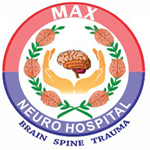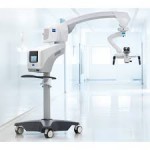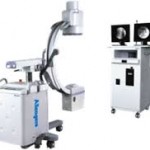
MODULAR OPERATION THEATER
Modular Operation Theatre is equipped with HEPA filters, ensuring the removal of even the smallest particles and microorganisms to minimize the risk of infection during surgeries. Our air handling unit maintains positive pressure within the operating room, effectively preventing the entry of bacteria and contaminants.
We pride ourselves on providing the latest in surgical technology, with our operating theater featuring top-of-the-line equipment tailored for complex procedures. Among our impressive array of tools are a Neuro navigation system, CUSA machine, Stereotaxic system, high-end Vario operating microscope from Zeiss, two imported causeries, and a pneumatic high-speed drill, 2 Gas Anesthesia workstation with 2 vaporizers, Fresenius Kebbi Syringe pump. state of the art CSSD-Horizontal autoclaves, ETO.
To facilitate seamless surgeries, we offer a digital operating table and shadowless lights, enhancing visibility and maneuverability for surgeons. At Modular Operation Theatre, we are dedicated to providing a safe, advanced, and efficient environment for surgical excellence.
INTENSIVE CARE UNIT=19Beds
MODULAR ICU-4 BEDS, NEURO ICU 9 BEDS, STEP DOWN ICU-6 BEDS
The ICU, or Intensive Care Unit, is a crucial part of any hospital where critically ill patients receive life-saving care. Neuro patients which require ICU care has to be looked after closely by a team of ICU staff and neuro doctors. In our Neuro ICUI doctors and nurses work tirelessly to save the lives of most critically ill patients. Our specialized staff give individual more care to each patient.
The ICU care is generally expensive; that is only because of the various equipment used in the room. We give our patient state of the ark treatments in an ICU. This type of treatment calls for expensive and carefully thought of equipment that would help our own patients. we take care that each patient is cured with less and less expenses.
Our ICU setup is equipped with all latest equipment required for life-support and the support of different organs in the body.
- VENTILATORS: We have 6 sophisticated ventilators along with transport ventilator with various advanced features. If a patient is unable to breathe on their own, ventilators provide them with oxygen and remove the carbon dioxide from the patient’s lungs. Traumatized brain requires more amount of oxygen to reduce the neuronal death.
- PATIENT MONITORS: We have n number of different monitors which allow us to remotely monitor a patient’s vital signs, medication intake, heart rate, blood pressure, oxygen saturation, and other important health metrics in real-time. These monitors have various features.
- SYRINGE INFUSION PUMPS: We are laced with many Fresenius Kabi syringe infusion pumps. When patients cannot take their medications, we advise using infusion pumps. Syringe infusion pumps are used to administer intravenous medications, fluids, and nutrition to patients. These devices are programmed to deliver precise doses of medication and fluids, reducing the risk of medication errors. We can also set timers or intervals as per the patient’s medication routine. ICU patients often require multiple infusions, making infusion pumps essential to the ICU setup.
- DEFIBRILLATORS: These shock-giving machines used to bring back an almost-dead patient. Those machines are called defibrillators. They are used to deliver an electric shock to the heart to restore its normal rhythm in patients experiencing cardiac arrest. Defibrillator machines are essential for managing patients with life-threatening cardiac arrhythmias in the ICU.
- ECG MACHINES: ECG machines monitor the heart’s electrical activity, like the rhythm and more. The ECG helps doctors diagnose and treat patients with heart conditions such as arrhythmias, heart attacks.
- PATIENT BEDS: We have good quality motorized patient beds which are necessary in ICUs. These specialized beds can be adjusted to provide maximum comfort and safety. ICU beds come with side rails, electric controls, and air mattresses to prevent bedsores. So, no need to ask our patient to shift from one bed to another, a good quality patient bed can save the day.
- CENTRAL SUCTIONS: Suction machines remove secretions and other fluids from a patient’s airway. These machines are vital in managing patients with respiratory distress and are used to prevent airway obstruction.
- FEEDING TUBES: Feeding tubes provide nutrition to patients who cannot eat or swallow on their own. These tubes are inserted through the nose and can be used to provide enteral nutrition. Feeding tubes are an essential part of the ICU equipment and are often used to manage critically ill patients.
- CENTRAL VENOUS CATHETERS: Central venous catheters or central lines administer medications, fluids, and nutrition directly into a patient’s bloodstream. CVCs are used when the patient’s veins in the arms are difficult to access. These catheters are inserted into a large vein in the neck, chest, or groin and can remain in place for extended periods to provide certain medications or nutrients. Central venous catheters are essential in managing critically ill patients in the ICU.
MEDICAL STORE (Shree Ganesh Medical Store)





 6 Ventilators (Germany, France)
6 Ventilators (Germany, France)